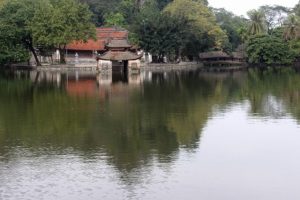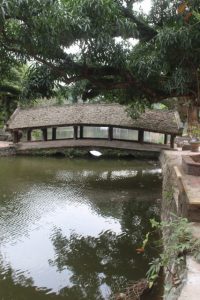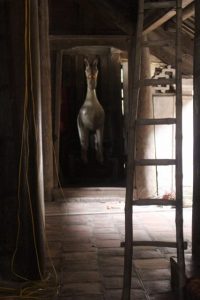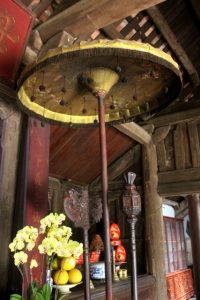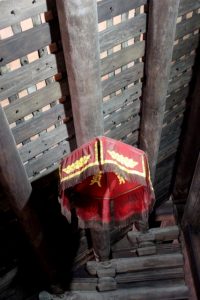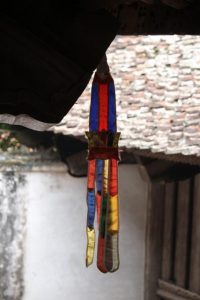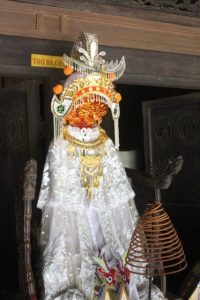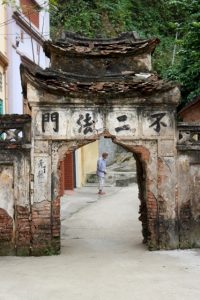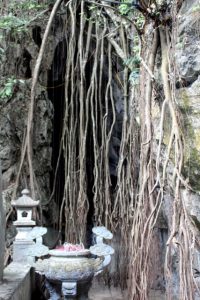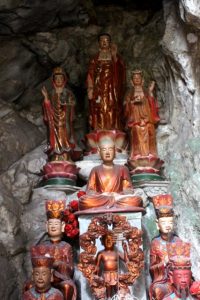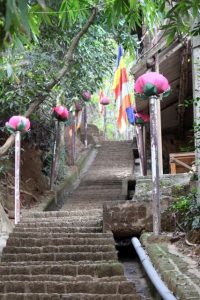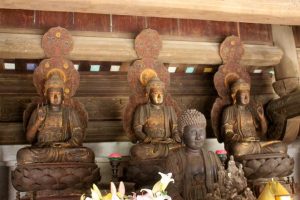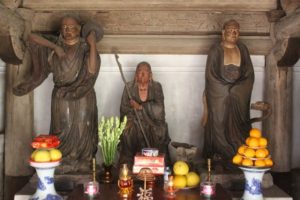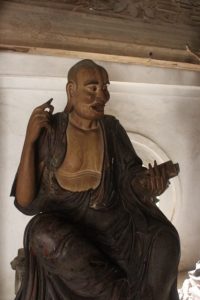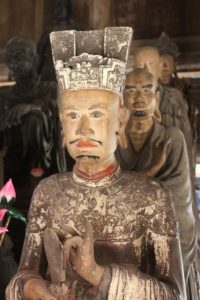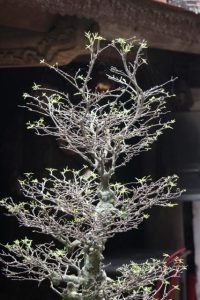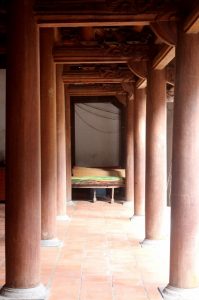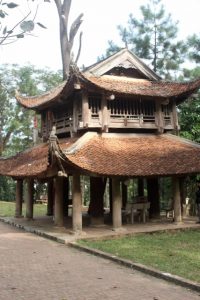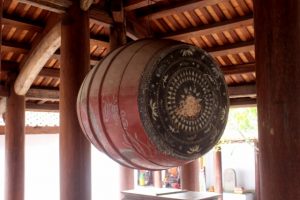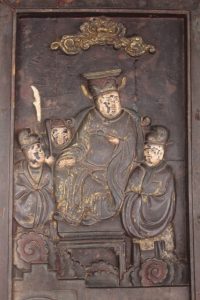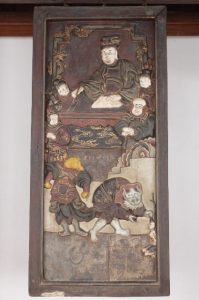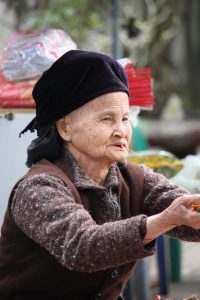Outside Hanoi are many evocative pagodas, three of which we visited, each with their own style, all with a serene peaceful atmosphere.
There are several tourist itineraries outside Hanoi, the most popular being visiting craft villages and visiting the Perfume Pagoda. The villages are no doubt interesting, but there is often a fine balance between that interest and the inevitable annoyance from having to beat back the sellers of those crafts. As for the Perfume Pagoda, being the prime tourist attraction outside Hanoi, this is likely equally infested with people who insistently try to sell me something I don’t want.
So we settled for a trip along a number of ancient pagodas in traditional Vietnamese architecture, possibly less touristic than the other options.
First on our itinerary was the Thay Pagoda, the Chua Thay, some 30 km from Hanoi in the village of Sai Son. We were dropped in front of an ugly new construction, corrugated iron roof, obligatory carper pond. Traditional? Until we realised that our driver had brought us to the wrong temple, and that the real thing was 300 m further, opposite a small lake. The pagoda was founded in the 11th Century by the monk Tu Dao Hanh, also called the Master – hence its other name, the Master’s Pagoda (as well as yet another name, Pagoda of the Heavenly Blessing). Story has it that the Master reincarnated as Buddha, and then also as the future king Ly Than Thong, who subsequenly – complicated, complicated – was in his turn saved again by the monk Tu Dao Hanh. Which has all contributed to the somewhat cult-status of this pagoda.
Obviously, the pagoda has undergone many restorations over time, but it maintains an old, very tranquil atmosphere, with three wooden halls one after the other, filled with old statues, some of them apparently as old as the pagoda. The lake outside, and the two small covered bridges, add to the experience, as does the steep karst hill immediately behind the buildings, which can be climbed to several small temples and a cave or two, filled with further statues. And almost no other tourists – although there is obviously potential, for busier days, as the many unused stalls suggest.
Nearby is the Tay Phuong Pagoda – the Pagoda of the West. This one is situated not at the foot, but on top of a hill, to which leads a long flight of steps. Again, no tourists to speak off, and yet, this is perhaps one of the most impressive pagodas I have been to during this entire trip. Once more a series of wooden halls, the roofs beautifully decorated with dragons and phoenixes. Inside is the most venerated collection of wooden sculptures, some of which are apparently on display in Hanoi’s Fine Arts Museum. Inside the central hall, they create a very peaceful atmosphere, notwithstanding the sometimes violent activities the sculptures seem to be involved in.
The third pagoda on the trail is the Tram Gian Pagoda, founded as a Buddhist cloister in 1185 on a low hill. Here, too, many wooden sculptures, as well as carved wood panels, in at least part-old temple buildings, and a calm and tranquil atmosphere.
All of these pagodas are obviously still being used for worshipping, with the smell of incense everywhere and rich offerings of fresh fruit, like pomelo, and huge boxes of biscuits, mostly of the cheese and chocolate varieties, in front of each shrine. Which adds further to the serene air that each of the pagodas exhales.
next: more activity outside Hanoi (lunatics!)

